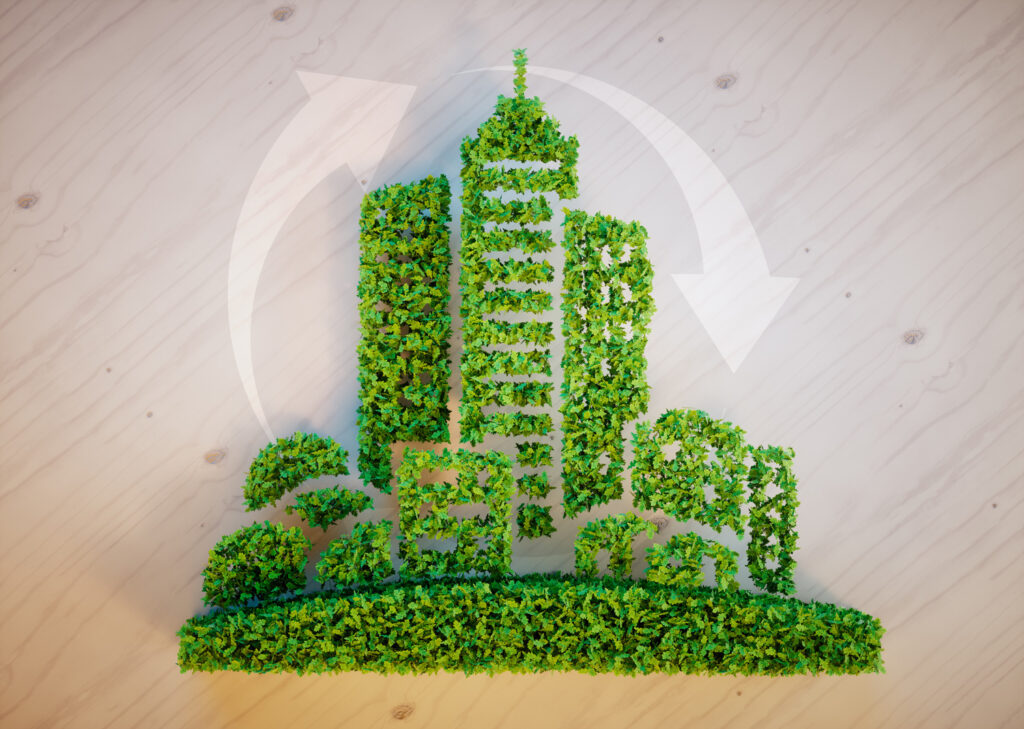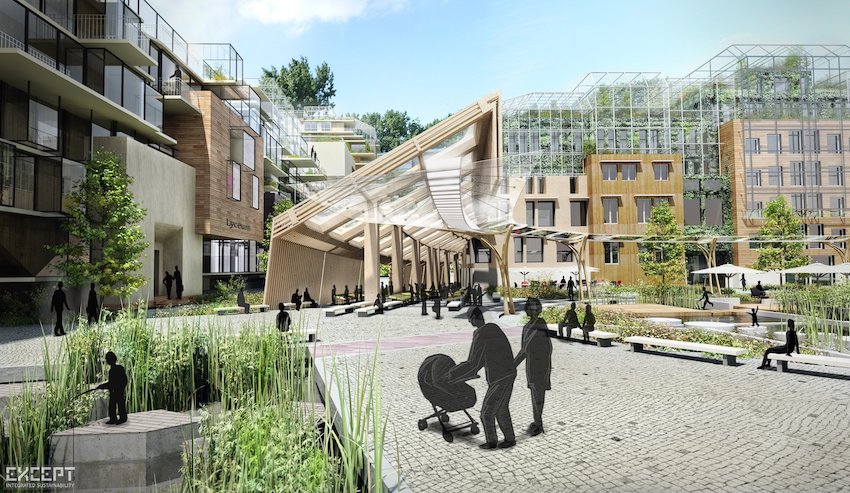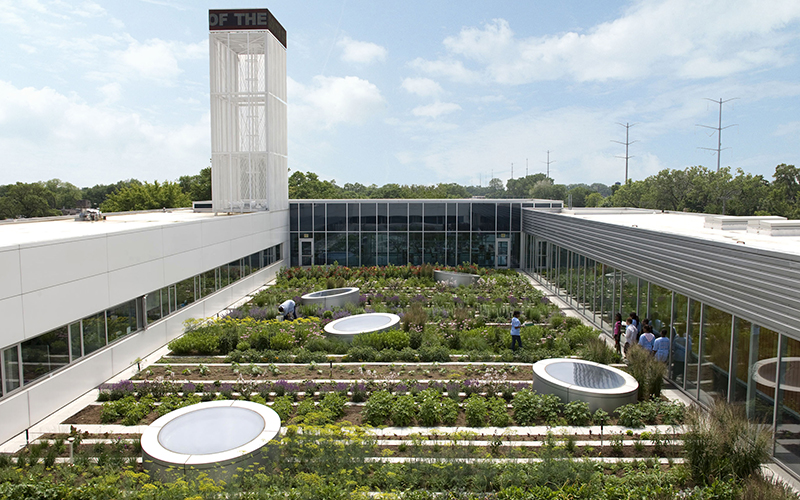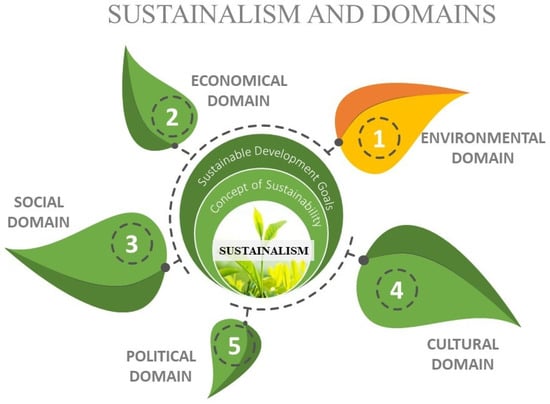Funding and Resources for Green Urban Projects.
Green urban projects represent transformative initiatives designed to enhance the sustainability and livability of urban environments. These projects effectively address environmental challenges while simultaneously promoting social well-being and fostering economic growth.
This article examines the importance of such projects, outlines the various funding options available—from government grants to crowdfunding—and highlights the resources essential for their successful implementation. Furthermore, it provides examples of inspiring green urban projects that have made a significant and lasting impact.
Explore how cities can leverage these critical opportunities for development and improvement.
What Are Green Urban Projects?
.jpg_00.jpeg)
Green urban projects embody a transformative approach to urban development by integrating sustainability principles designed to enhance the quality of life in urban areas while addressing critical environmental challenges.
These initiatives encompass a diverse array of eco-friendly practices, including habitat restoration, eco-certification, and the implementation of green roofs, urban agriculture, and the establishment of public spaces that promote biodiversity and community engagement.
By emphasizing the concepts of smart cities and innovative financing, these projects seek to mitigate the impacts of climate change, reduce carbon footprints, and foster urban resilience through collaboration among stakeholders, while incorporating resource allocation and participatory budgeting.
A comprehensive understanding of these initiatives is essential for advancing a healthier urban environment and achieving long-term sustainability objectives, aligning with climate action plans and urban revitalization efforts.
Why Are Green Urban Projects Important?
Green urban projects are essential for cultivating sustainable cities capable of effectively addressing the challenges associated with climate change and urbanization. These projects contribute to livable cities by employing nature-based solutions and sustainable practices.
These initiatives play a critical role in mitigating the environmental impacts of urban expansion by promoting energy efficiency, improving air quality, and enhancing biodiversity within urban ecosystems, as well as supporting pollution reduction and water conservation efforts.
Such projects frequently prioritize social equity, ensuring that low-income neighborhoods benefit from sustainable development initiatives, which can contribute to both economic growth and community development.
Furthermore, through participatory budgeting and stakeholder engagement, municipalities can effectively allocate resources toward innovative financing solutions, rendering green projects not only environmentally necessary but also economically viable. This approach aligns with climate adaptation strategies and ecosystem restoration goals.
What Are the Funding Options for Green Urban Projects?
Securing funding for green urban projects is critical for their successful implementation, and a range of options exists to support these initiatives.
Government grants and incentives are instrumental, providing financial assistance to local governments, non-governmental organizations, and community-based projects that prioritize sustainability and ecological restoration.
Additionally, private investors are increasingly significant, as they show growing interest in impact investing that aligns with their values of social and environmental responsibility.
Moreover, crowdfunding has emerged as an innovative financing mechanism, enabling communities to generate support for local eco-friendly initiatives while promoting community engagement and ownership.
1. Government Grants and Incentives
Government grants and incentives serve as vital sources of funding for green urban projects, providing the financial support necessary for the implementation of sustainable practices in urban development. These funds are typically allocated through federal and state programs designed to promote renewable energy, waste management, and urban resilience initiatives.
By facilitating eco-friendly design and the establishment of green infrastructure, government funding not only enhances community engagement but also significantly contributes to reducing the overall environmental impact.
A variety of funding options are available to support these initiatives, including specific grants tailored for sustainability projects that emphasize energy efficiency, sustainable public transportation, and the development of urban green spaces.
For example, the Environmental Protection Agency (EPA) offers grants for communities aiming to develop sustainable water management systems. Additionally, local governments can pursue funding from programs such as the Sustainable Communities Initiative, which enables municipalities to build sustainable economies while addressing critical environmental challenges.
These financial resources play a crucial role in driving innovation and improving the quality of life for urban residents, fostering a greener and more resilient future.
2. Private Investors
Private investors play a crucial role in financing green urban projects through impact investing, which aims to generate social and environmental benefits in conjunction with financial returns. This form of investment is particularly significant in urban areas, where sustainable development initiatives can result in job creation and economic revitalization.
By collaborating with local governments and non-governmental organizations (NGOs), private investors can facilitate the implementation of innovative financing solutions, ensuring that these environmentally conscious projects receive the necessary funding and are executed effectively for optimal impact.
The impetus for these investments often arises from a growing acknowledgment of the urgent need to address climate change and promote sustainability. Investors are increasingly attracted to projects that enhance energy efficiency, improve public transportation systems, and develop green spaces, all of which contribute to the resilience of urban communities.
As cities endeavor to transition to low-carbon economies, the engagement of private capital becomes essential in unlocking the potential for diversified funding sources.
This collaborative approach not only advances environmental objectives but also lays the groundwork for long-term economic growth, positioning cities as leaders in sustainable innovation.
3. Crowdfunding
Crowdfunding has emerged as a viable funding mechanism for green urban projects, enabling community members to contribute financially to initiatives that directly benefit their neighborhoods. This innovative financing approach not only facilitates the allocation of resources for environmentally sustainable initiatives but also promotes community engagement, social impact, and pride, as residents actively participate in the decision-making process through participatory budgeting.
By leveraging local networks, crowdfunding can effectively mobilize small contributions to achieve significant environmental objectives, thereby making sustainability accessible to a broader audience and supporting the development of community funding opportunities.
This crowdfunding model enables local ownership by providing individuals with the opportunity to invest in projects that align with their values and aspirations for a more sustainable future. Such engagement helps to strengthen social ties while illustrating that collective action can yield tangible results, thereby fostering a sense of shared responsibility among community members.
Furthermore, the feedback loop inherent in crowdfunding allows for adaptive strategies, as backers can voice their opinions and influence project development. Consequently, this financial assistance mechanism not only enhances the viability of urban renewal initiatives but also cultivates a culture of collaboration, transparency, and environmental stewardship within communities, aligning with sustainable practices and resource efficiency goals.
What Are the Resources Available for Green Urban Projects?
.jpg_01.jpeg)
The successful implementation of green urban projects is significantly dependent on the availability of diverse resources that promote sustainability and enhance the urban environment. These resources include community resources, strategic planning, and project management initiatives that facilitate urban sustainability.
Green building materials, for example, are essential for the construction of eco-friendly structures that comply with LEED certification standards and improve energy efficiency.
Likewise, sustainable energy sources, including solar and wind power, play a crucial role in minimizing the carbon footprint of urban developments and support climate-smart investments.
Furthermore, urban planning tools and environmental education programs are vital for equipping stakeholders with the requisite skills and knowledge to effectively implement green initiatives, ensuring knowledge sharing and capacity building.
1. Green Building Materials
Green building materials are essential elements in the construction of environmentally sustainable structures, with the objective of minimizing environmental impact while maximizing energy efficiency. The use of sustainable materials not only aids in obtaining LEED certification but also fosters eco-conscious design principles that emphasize resource conservation and waste reduction.
These materials include recycled steel, bamboo, and low-VOC paints, each of which plays a crucial role in the development of healthier urban environments.
Among these materials, reclaimed wood has become increasingly popular due to its reduced carbon footprint and aesthetic versatility, while insulation made from recycled denim offers enhanced energy efficiency. The implementation of reflective roofing is instrumental in mitigating urban heat islands, a significant benefit for metropolitan climates. Additionally, concrete alternatives such as hempcrete not only decrease the carbon intensity of a building but also enhance indoor air quality.
By selecting these innovative materials and solutions, builders can substantially improve the sustainability of their projects. This approach not only contributes positively to urban ecosystems but also addresses the growing demand for green infrastructure.
2. Sustainable Energy Sources
Sustainable energy sources, such as solar and wind power, are crucial for powering green urban projects while minimizing carbon footprints and supporting climate adaptation initiatives. By leveraging these renewable energy technologies and incorporating clean technology, cities can significantly enhance their energy efficiency and reduce their dependence on fossil fuels, thereby fostering a more sustainable urban environment.
The integration of sustainable energy solutions into urban planning not only improves air quality, contributing to pollution reduction, but also promotes long-term environmental justice and urban sustainability.
Incorporating geothermal heating and biomass energy into urban infrastructure presents additional opportunities for cities in their pursuit of sustainability. These technologies offer reliable energy sources while utilizing local resources, thereby minimizing transportation-related emissions and supporting the development of sustainable transportation systems.
Urban areas can also benefit from energy storage systems that capture excess power generated during peak production times for later use, ensuring a balance between supply and demand. Such initiatives not only stimulate economic growth through the creation of green jobs but also encourage community engagement in environmental stewardship, enabling residents to be active participants in the transition toward a more resilient future. Additionally, these efforts support urban resilience against urban heat islands and contribute to climate resilience.
3. Urban Planning Tools
Urban planning tools are essential in shaping sustainable cities by guiding zoning regulations and land use planning to promote environmentally friendly developments. These tools facilitate the integration of green infrastructure, ecosystem services, and smart city concepts, thereby advancing ecological solutions that enhance urban resilience and community well-being.
Effective urban planning not only ensures the appropriate allocation of resources for green initiatives but also fosters collaboration among stakeholders in the creation of livable, sustainable communities. This process includes considerations for resource allocation, investment strategies, and participatory budgeting to ensure comprehensive engagement.
Among these tools are comprehensive plans, which articulate a city’s vision for future development, and zoning ordinances, which govern land use to achieve balanced growth. These efforts are supported by environmental assessments and sustainability metrics to guide urban sustainability.
Additionally, tools such as Geographic Information Systems (GIS) enable urban planners to analyze spatial data, facilitating the identification of areas that require green spaces, urban revitalization, or improvements through habitat creation and ecosystem restoration projects.
The implementation of these strategies within the context of smart cities can further optimize resource management and improve the quality of urban life, ensuring that sustainable practices, such as eco-certification and nature-based solutions, are thoroughly integrated into the framework of urban development.
How Can Cities Access These Funding and Resources?
Cities can secure funding and resources for sustainable urban projects through strategic methods, including the establishment of partnerships, grant applications, and the promotion of stakeholder engagement. These methods are crucial for accessing climate funding and promoting urban sustainability.
By collaborating with local businesses, non-governmental organizations (NGOs), and governmental entities, urban planners can develop public-private partnerships that harness both financial assistance and specialized expertise for sustainability initiatives. This collaboration helps secure public funding, private investment, and environmental grants to support eco-friendly initiatives.
Moreover, effective grants management and networking can help cities stay informed about available resources and funding opportunities, including federal funding, state grants, and innovation grants, thereby facilitating the implementation of meaningful ecological projects.
1. Forming Partnerships
Forming partnerships is a fundamental strategy for cities seeking to access funding and resources for green urban projects, as collaboration can yield substantial benefits for all stakeholders involved. Partnership models with environmental NGOs and social enterprises are particularly valuable in mobilizing community resources and impact investing.
Public-private partnerships, in particular, play a crucial role in mobilizing investments and facilitating resource allocation for sustainable initiatives. By engaging local businesses, non-governmental organizations (NGOs), and community organizations, cities can effectively harness collective expertise and financial support to implement impactful eco-friendly projects. These collaborations are often supported by green bonds and carbon offset programs.
In this dynamic environment, leveraging the strengths of diverse entities not only enhances innovation but also ensures a more comprehensive approach to sustainability. For instance, these collaborations can lead to shared responsibilities in project implementation, thereby minimizing risks and maximizing resource efficiency through knowledge sharing and joint ventures.
When communities actively engage in these initiatives, they benefit from increased awareness of eco-friendly practices, fostering a culture of sustainability.
Such stakeholder collaboration serves as a powerful catalyst for change, creating a ripple effect that can inspire other cities to pursue similar community-driven actions aimed at developing greener urban landscapes.
2. Applying for Grants and Incentives
.jpg_10.jpeg)
Applying for grants and incentives constitutes a critical process for cities seeking financial support for green urban projects, given the myriad of funding opportunities available through government programs, federal funding, state grants, and philanthropic organizations.
This process typically requires the submission of comprehensive grant applications that delineate the project’s objectives, expected outcomes, and alignment with sustainability goals. By strategically targeting grants that prioritize environmental justice, community development, and social equity, cities can significantly enhance their prospects of securing essential funding.
Effective grant applications must also incorporate a well-structured budget plan and emphasize potential partnerships with local organizations or stakeholders who share a vested interest in achieving similar sustainability objectives. These applications should also highlight project feasibility and policy frameworks.
Furthermore, cities should concentrate on demonstrating previous successes in environmental initiatives to establish credibility and trust with potential funders. Considering the growing emphasis on environmental justice, applicants must ensure that their proposals reflect a commitment to reducing disparities and promoting inclusive community engagement. Demonstrating success in climate action plans and resource efficiency is also advantageous.
Through this meticulous approach, cities not only increase their likelihood of obtaining funding but also contribute to a broader movement towards sustainable urban living.
3. Networking and Building Relationships
Networking and relationship-building are essential components for cities aiming to successfully access funding and resources for green urban projects. Establishing connections with potential stakeholders, including government agencies, non-governmental organizations (NGOs), and local businesses, can provide access to valuable funding sources, environmental grants, and collaborative opportunities.
Promoting community engagement through outreach initiatives enhances awareness of available resources, ensuring that local perspectives are considered in the planning process. This is critical for resource mobilization and strategic planning in sustainable development.
By collaborating closely with diverse stakeholders, cities can develop a cohesive vision that attracts investments while integrating sustainable practices into urban development. This multi-faceted collaboration facilitates the pooling of resources and knowledge, which is vital for identifying common goals and addressing community needs. Additionally, it supports urban mobility and sustainable architecture initiatives.
Engaging residents in these discussions further strengthens relationships and fosters trust, leading to a more inclusive approach to project implementation. Ultimately, the symbiotic relationships cultivated through effective networking can significantly enhance a city’s capacity to secure essential funding and mobilize support for transformative green initiatives and sustainable practices.
What Are Some Successful Green Urban Projects?
Successful green urban projects illustrate the potential of innovative financing mechanisms and community development initiatives to create sustainable and livable environments that enhance urban ecosystems. These projects often leverage funding sources such as green bonds and impact investing to achieve their goals.
Notable projects such as the High Line in New York City, the Bullitt Center in Seattle, and the Vauban District in Freiburg, Germany, exemplify how effective urban planning and collaboration among stakeholders can result in ecological restoration, habitat restoration, and an improved quality of life.
These exemplary cases emphasize the significance of incorporating sustainability into urban renewal efforts, serving as an inspiration for cities worldwide to pursue similar initiatives.
1. The High Line in New York City
The High Line in New York City represents a significant case of urban restoration, transforming a previously disused elevated railway into a vibrant public park. This project underscores the critical role of green spaces in urban environments. Not only does it enhance the aesthetic appeal of the city, but it also promotes biodiversity and encourages community engagement by providing a unique recreational area for both residents and visitors. The success of this project highlights the importance of nature-based solutions and community funding in urban revitalization.
The successful incorporation of ecological design principles in the High Line serves as a valuable model for other cities seeking to revitalize neglected urban spaces.
As a vital green corridor, the High Line fosters the growth of local flora and fauna while offering a serene retreat amidst the hustle and bustle of city life. Visitors can experience art installations and participate in various events that stimulate creativity and enhance social interactions, demonstrating how contemporary public parks can act as catalysts for community connection.
Furthermore, this innovative space has generated interest in urban agriculture and sustainability initiatives, illustrating that well-designed green areas can significantly enhance both individual well-being and environmental health. Consequently, the High Line stands as a beacon of progressive urban planning.
2. The Bullitt Center in Seattle
The Bullitt Center in Seattle is recognized as one of the most environmentally sustainable commercial buildings globally, exemplifying the potential of sustainable architecture to meet stringent environmental standards and achieve LEED certification. This innovative structure emphasizes energy efficiency by harnessing renewable energy sources and employing advanced technologies to minimize its ecological footprint, contributing to urban sustainability.
The Bullitt Center functions not only as a workspace but also as an educational resource, illustrating the possibilities of green building practices to inspire future urban development and community engagement.
The design of the center incorporates features such as a rainwater harvesting system, solar panels, and a green roof, all of which contribute to its ambitious sustainability objectives, including climate resilience and urban revitalization.
The center encourages engagement from architects, urban planners, and the community by showcasing cutting-edge models of sustainability, demonstrating how eco-friendly materials and intelligent construction techniques can significantly reduce energy consumption and promote smart cities.
Additionally, the facility serves as a living laboratory for the exploration of energy-efficient practices, offering workshops and tours that promote awareness of environmental stewardship and sustainable practices.
By highlighting the tangible benefits of sustainable building, the Bullitt Center fosters a culture of sustainability that extends beyond its premises, promoting a broader commitment to greener lifestyles, environmental policy, and urban planning initiatives.
3. The Vauban District in Freiburg, Germany
The Vauban District in Freiburg, Germany, serves as a prominent example of an eco-neighborhood that exemplifies sustainable living through innovative community planning, urban mobility solutions, and sustainable transportation.
This distinctive urban environment not only minimizes reliance on automobiles but also prioritizes pedestrian-friendly pathways and comprehensive cycling infrastructure, enabling residents to navigate their surroundings with ease. The focus on shared spaces promotes social interaction and community cohesion while strengthening social equity and livable cities.
The integration of renewable energy sources, including solar panels on rooftops, reflects a strong commitment to ecological sustainability and green infrastructure, positioning Vauban as a model for future urban developments.
This district illustrates how urban areas can effectively adapt to contemporary environmental challenges through ecological design while simultaneously enhancing the overall quality of life for their residents.
Frequently Asked Questions
.jpg_11.jpeg)
1. What types of funding and resources are available for green urban projects, including environmental grants, public funding, and private investment?
There are a variety of funding and resources available for green urban projects, including grants, loans, tax incentives, and partnerships with businesses or organizations. Government agencies, non-profit organizations, environmental NGOs, and private companies may all offer different forms of support for these projects.
2. How can I find out about funding and resource opportunities for my green urban project, such as federal funding and state grants?
Researching online and networking with individuals or organizations involved in sustainable development are great ways to find out about funding and resource opportunities for green urban projects. Additionally, you can reach out to your local government, environmental groups, or environmental NGOs for information and guidance.
3. Are there any specific criteria for receiving funding or resources for a green urban project, such as project feasibility and sustainability metrics?
The criteria for receiving funding and resources for a green urban project may vary depending on the source. However, most opportunities will require a detailed project proposal, a demonstration of the project’s potential environmental and social impact, and a strong plan for sustainability and long-term success, including project feasibility and sustainability metrics.
4. Can I apply for multiple funding and resource opportunities for my green urban project, such as crowdfunding and green bonds?
Yes, it is possible to apply for multiple funding and resource opportunities for your green urban project. In fact, it is recommended to diversify your sources of funding, such as crowdfunding and green bonds, to increase the chances of receiving support and to reduce the financial burden on any one source.
5. Is there a timeline for when funding and resources for green urban projects, such as climate funding and innovation grants, are available?
The availability of funding and resources for green urban projects, such as climate funding and innovation grants, can vary, but it is important to start researching and applying for opportunities as early as possible. Some opportunities may have specific deadlines, while others may be available on a rolling basis. It is essential to stay updated on any announcements or changes in funding availability.
6. What happens if my green urban project does not receive enough funding or resources to support sustainable development?
If your green urban project does not receive enough funding or resources, there are still options available. You can try reaching out to different sources, adjusting your project proposal, or looking into alternative funding models such as crowdfunding or community partnerships. It is also important to have a backup plan and consider scaling down your project if necessary while maintaining a focus on sustainable development.

I’m Bruno, an architect with a deep passion for Biophilic Design in Urban Architecture. Throughout my career, I’ve focused on integrating natural elements into urban planning, and I created this site to share my insights and foster a deeper understanding of how biophilic principles can significantly enhance urban living. Dedicated to sustainable development, I continually explore innovative design solutions that promote both environmental and human well-being in city landscapes.














Publicar comentário